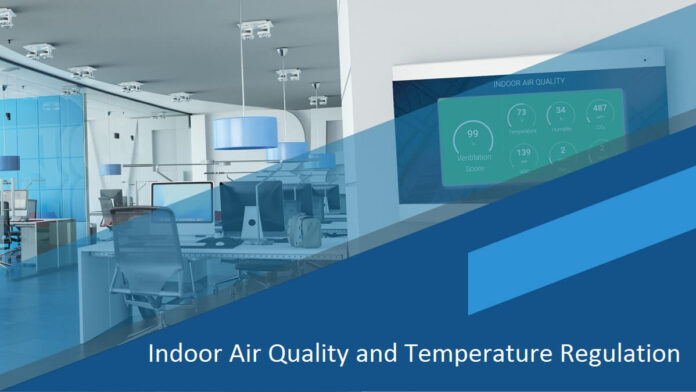The air quality in your indoor environments, be it at home or work, significantly influences your health, comfort, and productivity. A key aspect in this context is understanding the intricate relationship between indoor air quality and temperature regulation. Solutions like frosted window film, efficient ventilation, and smart temperature controls play a crucial role in this dynamic. As such, this article delves into how these elements interact to create healthier and more comfortable indoor spaces and why maintaining this balance is essential for your well-being.
The Link Between Air Quality and Temperature
Indoor air quality is not just about the absence of pollutants; it’s also about how you perceive the air you breathe. Temperature plays a vital role in this perception. Warm temperatures can exacerbate the presence of pollutants, while too cold an environment can lead to discomfort and respiratory issues. Striking the right balance is key to maintaining a healthy indoor environment.
Impact of Poor Air Quality on Health and Comfort
Poor indoor air quality causes various health issues, from minor irritations like headaches and fatigue to more serious conditions such as asthma, respiratory infections, etc. Temperature inconsistencies can worsen these effects by making the indoor environment either too stifling or too chilly for comfort.
Temperature Regulation and Its Challenges
Regulating temperature indoors is a complex task, influenced by external weather conditions, the building’s insulation, and internal heat sources. The challenge is to maintain a consistent temperature that supports good air quality without causing discomfort to the occupants.
Solutions for Maintaining Optimal Indoor Air Quality
Several strategies can help maintain good indoor air quality while regulating temperature. These include:
Ventilation Systems: Effective ventilation is crucial for introducing fresh air and diluting pollutants. Modern HVAC systems can filter out contaminants while maintaining a comfortable indoor temperature.
Use of Frosted Window Film: Installing frosted window film can help regulate temperature by reducing heat gain from sunlight while still allowing natural light to enter. This balance ensures the indoor space does not get too hot, maintaining a comfortable environment and supporting air quality.
Air Purifiers: Air purifiers can remove pollutants from the air, especially in areas where ventilation is limited. They are particularly useful in managing allergens and particulate matter.
Regular Maintenance of Heating and Cooling Systems: Proper maintenance of heating and cooling systems ensures they operate efficiently and do not contribute to indoor pollution.
Humidity Control: Managing humidity levels is important for both air quality and temperature regulation. Too much humidity can lead to mould growth and a feeling of stuffiness, while too little can cause dry air that irritates the skin and respiratory system.
Building Materials and Design
The materials used in building construction and interior design can significantly affect both temperature regulation and air quality. Materials that off-gas pollutants can degrade air quality, while design features that enhance natural ventilation and light can improve it.
Energy Efficiency and Sustainability
In the quest for optimal indoor air quality and temperature regulation, energy efficiency plays a crucial role. Sustainable practices and energy-efficient appliances contribute to a better indoor and outdoor environment.
The Human Factor
Ultimately, the occupants play a significant role in maintaining indoor air quality and temperature. Simple actions like using exhaust fans, keeping the home clean, and being mindful of indoor activities that could introduce pollutants are crucial.
Read Also: Impressive Features and Specifications of Three Top Portable Air Conditioners
Conclusion
The relationship between indoor air quality and temperature regulation is a delicate balance that requires attention and care. By understanding this connection and implementing solutions like frosted window film, effective ventilation, and regular maintenance, you can create indoor environments that are not only comfortable but also healthy. So, as you spend a significant amount of time indoors, ensuring the quality of your indoor air is not just a matter of comfort but also of your overall health and well-being.







































